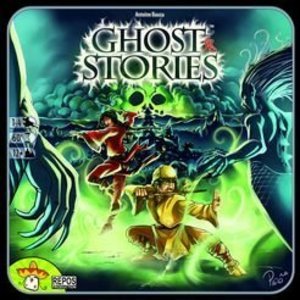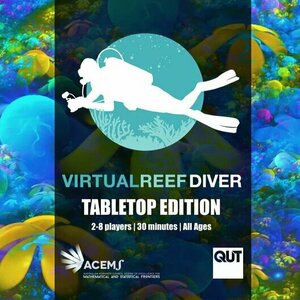
Runway Life
Games and Entertainment
App
Rule the fashion world in Runway Life! Build your modeling agency into a worldwide fashion...

Tuesday Knight Podcast | All About Board Games
Podcast
A podcast about board games and other games you can play on or under your table! This podcast...
Real Gun Shot Sounds Simulator (0 KP) created a post
Mar 10, 2023 (Updated Mar 10, 2023)
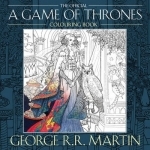
The Official A Game of Thrones Colouring Book
John Howe, Tomislav Tomic, George R.R. Martin and Yvonne Gilbert
Book
The perfect gift for fans of George R. R. Martin's A SONG OF ICE AND FIRE and HBO's GAME OF THRONES,...

the perfect wedding cake game
Games
App
Wedding cake is often the focus of a whole wedding. And it is a sweet and beautiful wedding cakes...
Matthew Krueger (10051 KP) rated Ghost Stories in Tabletop Games
Jul 28, 2020 (Updated Jul 30, 2020)
Gameplay:
Each Player represents a Taoist monk working together with the others to fight off waves of ghosts.
The players, using teamwork, will have to exorcise the ghosts that appear during the course of the game. At the beginning of his turn, a player brings a ghost into play and places it on a free spot, and more than one can come in at the same time. The ghosts all have abilities of their own – some affecting the Taoists and their powers, some causing the active player to roll the curse die for a random effect, and others haunting the villager tiles and blocking that tile's special action. On his turn, a Taoist can move on a tile in order to exorcise adjacent ghosts or to benefit from the villager living on the tile, providing it is not haunted. Each tile of the village allows the players to benefit from a different bonus. With the cemetery, for example, Taoists can bring a dead Taoist back to life, while the herbalist allows to recover spent Tao tokens, etc. It will also be possible to get traps or move ghosts or unhaunt other village tiles.
To exorcise a ghost, the Taoist rolls three Tao dice with different colors: red, blue, green, yellow, black, and white. If the result of the roll matches the color(s) of the ghost or incarnation of Wu-Feng, the exorcism succeeds. The white result is a wild color that can be used as any color. For example, to exorcise a green ghost with 3 resistance, you need to roll three green, three white, or a combination of both. If your die rolls fall short, you can also use Tao tokens that match the color in addition to your roll. You may choose to use these after your roll. Taoists gain these tokens by using certain village tiles or by exorcising certain ghosts. One of the Taoists has a power that allows him to receive such a token once per turn.
To win, the players must defeat the incarnation of Wu-Feng, a boss who arrives at the end of the game. There are also harder difficulty levels that add more incarnations of Wu-Feng, in which to win, you must defeat all of them.
There are many more ways to lose, however. The players lose if three of the village's tiles are haunted, if the draw pile is emptied while the incarnation of Wu-Feng is still in play, or if all the priests are dead.
It is hard game but the strategy to this game is excellent cause you have to think about your moves and what to do next. That and the clock is ticking down to one of the ten Wu-Feng Minions. Also if 3 village spaces get crushed than you lose. Also the luck of the dice and the cards. The strategy is ten fold. Its hard but a excellent game and a must play game. Buy it if you havent already cause its a must. If you want to learn more or see a runthrough of the game go to BoardGameGeek, Rahdo Runthroughs or Dice Tower Reviews.
Purple Phoenix Games (2266 KP) rated Virtual Reef Diver in Tabletop Games
Nov 19, 2020
Virtual Reef Diver is an educational card game that helps to bring awareness to happenings of the Great Barrier Reef and even implements ways for players to participate in the studies of this natural wonder. The winner(s) of the game is (are) the team who scores the most points at the end of three rounds, and also hopefully learns several new things along the way.
DISCLAIMER: We were provided a copy of this game for the purposes of this review. It is not my intention to detail every rule in the game, but to give a general idea of the feel of the game flow. You are invited to download the rulebook, purchase the game through the publisher directly, or through any retailers stocking it. -T
To setup, shuffle the Action card deck, the Reef Disturbance deck, and the Reef decks separately, placing them on the table. Each team, or player, may be given a Classification Card (reference card) as well. From the Reef deck deal 12 cards face-up on the table in a 3×4 (or 4×3 whatever) grid. Each round a new set of 12 cards will be dealt to the table. Determine the starting player/team and the game may begin!
Players will decide at the beginning of the game which mode they wish to play: Standard or Advanced. I will be previewing the Standard mode. On a turn a player will choose a card from the grid and attempt to identify its type: Hard Coral, Soft Coral, Algae, Invertebrates, Fish, Marine Mammals, or Technology. If correct, the player will collect the card as a trophy and it will be worth VPs at the end of the game. The next player may then take a turn identifying the type of card and collecting if correct, or leaving on the table if incorrect.
All cards are worth VPs except the Technology cards. These, once correctly identified, will allow the player to exchange it for an Action card to be used in the future. Action cards can be very powerful at different times during the game.
Once all 12 cards have been taken for the round the players will reveal a Reef Disturbance card. These typically will have players discarding cards of a certain type, or several cards at once. Some Action cards will negate these effects, so having them ready is great strategy. The grid may now be replenished and the second round started. The game ends at the end of the third round and players count up points to determine the winner!
Components. Again, while this game is in production, I treated it as a preview, and these are final components. That said, this game exists to benefit the Australian Government-funded citizen science website ACEMS. Further, this game is a bunch of cards in a box. The photos on the main Reef cards are mostly quite nice, with a couple looking perhaps a little outdated. The other graphics on the game are fine. They don’t get in the way, and are functional. The cards themselves are also fine quality. Nothing in the box is exquisite nor subpar at all.
The gameplay is something that I am struggling with as a reviewer. You see, this is a VERY different game depending on the mode you play. I will probably always play it on Standard mode because I can guess what type a card may be, but the Advanced mode also awards extra points for identifying the common name, taxonomic family (scientific name), and habitat of each card’s subject. That is for eggheads, man! I’m just a normal American-educated gamer. I don’t know that stuff! So the Standard mode is relatively easy to play and be good, where the Advanced mode is for those times when you have, let’s say, a Scrabble or Chess snob who revels in being the most intellectual person in the room. That’s not at all a bad thing, and I hope any real eggheads know I am kidding around. I am merely jealous at how smart many people are.
That being the case, this game would work well for a group of younger gamers eager to learn about the marine life on the Great Barrier Reef, or those looking for a relaxing quasi-trivia style card game. Need to amp it up and play on Advanced mode? Go for it. I’ll still be flailing about like a clownfish out of water trying to understand the difference between hard and soft coral and how to distinguish them. Seriously. Take a look for yourself and help out a VERY worthy cause in the process.
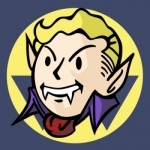
Fallout Shelter
Games
App
*** App Store Best of 2015 *** Mobile Game of the Year - 2016 DICE Awards Winner 2015 Golden...
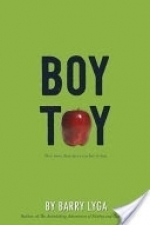
Boy Toy
Book
Five years ago Josh's life changed. Drastically. And everyone in his school, his town – seems like...
Young Adult Adult topics
